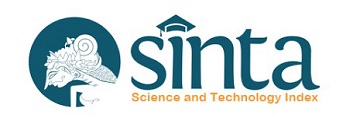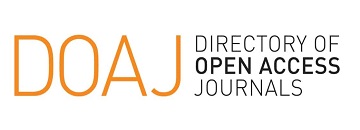Dampak sistem silvikultur intensif (SILIN) terhadap komunitas burung bawah tajuk di PT Triwira Asta Bharata, Kaltim

Downloads
Downloads
Budiansyah, B. (2006). Komposisi dan Struktur Tegakan Areal Bekas Tebangan dengan Sistem Silvikultur Tebang Pilih Tanam Indonesia Intensif (TPTII) di Areal IUPHHK PT. Erna Djuliawati, Kalimantan Tengah. Fakultas Kehutanan Institut Pertanian Bogor (Skripsi). Tidak dipublikasikan. 98p.
Butarbutar, T. (2014). Sistem silvikultur tebang pilih untuk mitigasi perubahan iklim melalui kerangka REDD+. Jurnal Analisis Kebijakan Kehutanan, 11(2): 163 – 173.
Brower, J.E., J.H. Zar, (1998). Field and Laboratory Methods for General Ecology. Dubuque Lowa: W. M. Brown Company Publ.
Chan, S.S., Larson, D.J., Maas-Hebner, K.G., Emmingham, W.H., Johnston, S.R., Mikowski, D.A. (2006). Overstory and understory development in thinned and underplanted Oregon Coast Range Douglas-fir stands. Canadian Journalof Forestry Research, 36, 2696–2711.
Cleary, D.R., Boyle, T.J.B., Setyawati, T., Anggraeni, C., Van Loon, E.E., Menken, S.B.J. (2007). Bird species and traits associated with logged and unlogged forest in Borneo. Ecological Applications, 17(4), 1184–1197.
Costa, F.R.C., Magnusson, W.E. (2003). Effects of selective logging on the diversity and abundance of flowering and fruiting understory plants in a central Amazonian forest. Biotropica, 35(1), 103–114.
Departemen Kehutanan. (1993). Pedoman dan Petunjuk Teknis Tebang Pilih Tanam Indonesia (TPTI) pada Hutan Alam Daratan. Jakarta: Direktorat Jenderal Pengusahaan Kehutanan.
Dupuy, J.M., Chazdon, R.L. (2006). Effects of vegetation cover on seedling and sapling dynamics in secondary tropical wet forests in Costa Rica. Journal of Tropical Ecology, 22, 65– 76.
Edwards, D.P., Larsen, T.H., Docherty, T.D.S., Ansell, F.F., Hsu, W.W., Derhe, M.A., Hamer, K.C., Wilcove, D.S. (2011). Degraded lands worth protecting: the biological importance of Southeast Asia’s repeatedly logged forests. Proceeding of The Royal Society B 278: 82–90, Doi:10.1098/rspb.2010.1062.
Elzinga, J.A., Atlan, A., Biere, A., Gigord, L., Weis, A.E., Bernasconi, G. (2007). Time after time: flowering phenology and biotic interaction. Trends in Ecology and Evolution, 22(8), 423- 427.
Ernst, R., Linsenmair, K.E., Rodel, M. (2006). Diversity erosion beyond the species level: Dramatic loss of functional diversity after selective logging in two tropical amphibian communities. Biological Conservation, 133, 143–155. Doi:10.1016/j.biocon.2006.05.028.
Fachrul, M.F. (2007). Metode Sampling Bioekologi. Jakarta: Bumi Aksara. 208 h.
Ghazoul, J. (2006). Floral diversity and the facilitation of pollination. Journal of Ecology, 94, 295-304. Doi: 10.1111/j.1365- 2745.2006.01098.x.
Hardiansyah, G.(2013). Studi pertumbuhan tanaman Merantisistem TPTJ di IUPHHK PT.SJM Kalbar. Jurnal Hutan Tropis, 1(1), 71-75.
Hasanah, P. (2009). Kajian Aspek Vegetasi dalam Penerapan TPTI Intensif Di IUPHHK/HA PT. Sarmeinto Parakantja Timber, Kalimantan Tengah (Skripsi). Bogor: Fakultas Kehutanan Institut Pertanian Bogor. Tidak dipublikasikan. 48p.
Heddy, S., Kurniati, M. (1996). Prinsip-prinsip dasar ekologi: Suatu bahasan tentang kaidah ekologi dan penerapannya. Jakarta: PT. Raja Grafindo Persada. 271 h.
Holbech, L.H. (2005). The implications of selective logging and forest fragmentation for the conservation of avian diversity in evergreen forests of south-west Ghana. Bird Conservation International, 15, 27–52. Doi:10.1017/S0959270905000031.
Holmes, D., Nash, S. (1999). Burung-burung di Sumatera dan Kalimantan. Jakarta: Pusat Penelitian dan Perkembangan Biologi LIPI.
Indrawan, A. (2008). Sejarah perkembangan sistem silvikultur di Indonesia. Prosiding Lokakarya Nasional Penerapan Multisistem Silvikultur pada Pengusahan Hutan Produksi dalam Rangka Peningkatan Produktivitas dan Pemanfaatan Kawasan Hutan. Tanggal 23 Agustus 2016. Bogor: Fakultas Kehutanan IPB dan Direktorat Jenderal Bina Produksi Departemen Kehutanan.
Istomo. (2006). Evaluasi dan penyesuaian sistem silvikultur hutan rawa gambut, khususnya jenis ramin (Gonystylus bancanus (Miq.) Kurz.) di Indonesia. Prosiding Workshop Nasional Alternatif Kebijakan dalam Pelestarian dan Pemanfaatan Ramin. Bogor, 22 Februari 2006. Bogor: Pusat Penelitian dan Pengembangan Hutan dan Konservasi Alam bekerjasama dengan ITTO PPD 87/03 Rev.2(F).
IUCN. (2015). The IUCN Red List of Threatened Species. http://www.iucnredlist.org/. Diakses 1-3 Juli 2015.
Lindh, B.C. (2008). Flowering of understory herbs following thinning in the western Cascades, Oregon. Forest Ecology and Management, 256, 929–93. doi:10.1016/j.foreco.2008.05.055.
MacKinnon, J., Phillips, K., van Balen, B. (2010).LIPI-Seri Panduan Lapangan: Burung-burung di Sumatera, Jawa, Bali dan Kalimantan. Jakarta: BirdLife-Indonesia Programme.
McGrath, L.J., van Riper III, C., Fontaine, J.J. (2009). Flower power: tree flowering phenology as a settlement cue for migrating birds. Journal of Animal Ecology, 78, 22–30. Doi: 10.1111/j.1365-2656.2008.01464.x.
Nurtjahjawilasa, Duryat, K., Yasman, I., Septiani, Y., Lasmini. (2013). Konsep dan Kebijakan Pengelolaan Hutan Produksi Lestari dan Implementasinya. Jakarta: Program Terestrial The Nature Conservancy Indonesia.
Odum, E.P., (1971). Fundamental of Ecology. Philidelphia: W.E Saunders, 574p.
Pena-Claros, M., Boot, R.G.A., Dorado-Lora, J., Zonta, A. (2002). Enrichment planting of Bertholletia excels in secondary forest in the Bolivian Amazon: effect of cutting line witdh on survival, growth and crown traits. Forest Ecology and Management, 161, 159-168.
Plumptre, A. C. Dranzoa, I. Owiunji. (2001). Bird communities in logged and unloggeda African forests: Lessons from Uganda and Beyond. In The Cutting Edge: Conserving Wildlife in Logged Tropical Forests. R.A. Fimbel, A. Grajal. J.G. Robinson (eds), 700 p. New York. United States of America: Columbia University Press.
Purba, C.P.P, Nanggara, S.G., Ratriyono, M., Apriani, I., Rosalina, L., Sari, N.A., Meridian, A.H. (2014). Potret Keadaan Hutan Indonesia 2009 - 2013. Bogor: Forest Wacth Indonesia.
Putz, F.E., Romero, C. (2014). Futures of Tropical Forest (sensu lato). Biotropica, 46(4), 495 – 505. Doi: 10.1111/btp.12124.
Raich, J.W. dan Khoon, G.K. (1990). Effects of canopy openings on tree seed germination in a Malaysian dipterocarp forest. Journal of Tropical Ecology, 6, 203-217.
Ralph, C.J., E. H. Dunn, W. J. Peach, C. M. HandeL. (2004). Recommendations for the use of mist nets for inventory and monitoring of bird populations. Studies in Avian Biology, 29, 187– 196.
Restrepo, C., Gomez, N., Heredia, S. (1999). Anthropogenic edges, treefall gaps, and fruit– frugivore interactions in a neotropical montane forest. Ecology, 80(2), 668–685.
Royo, A.A., Carson, W.P. (2006). On the formation of dense understory layers in forests worldwide: consequences and implications for forest dynamics, biodiversity, and succession. Canadian Journal of Forestry Research, 36, 1345-1362. Doi: 10.1 1391x06-02.
Rozzi, R., J.E. Jimenez, F. Massardo, J.C. Torries-Mura, R. Rijal. (2014). The Omora Park Long-term ornithological researchprogram; study sites and methods. In Magellanic Sub-Antarctic Ornithology: The First Decade of Long-Term Bird Studies at the Omora Ethnobotanical Park, Cape Horn Biosphere Reserve, Chile. R. Rozzi dan J. E. Jimenez (eds). The University of North Texas Press & Ediciones Universidad de Magallanes. Denton, Texas. United States, 392p.
Saharjo, B.H., G. Cornelio. (2011). Suksesi alami paska kebakaran pada hutan sekunder di Desa Fatuquero, Kecamatan Railaco, Kabupaten Ermera Timor Leste. Jurnal Silvikultur Tropika, 2(1), 40-45.
Sapkota, I.P. dan Oden, P.C. (2009). Gap characteristics and their effects on regeneration, dominance and early growth of woody species. Journal of Plant Ecology, 2(1), 21–29. Doi: 10.1093/jpe/rtp004.
Schulze, C.H., Riedl, I. (2008). Bird assemblages of forested andhuman-modified countryside habitats in the Pacificlowlands of southern Costa Rica. Stapfia, 88(80), 395-408.
Soekotjo. (2009). Teknik Silvikultur Intensif (SILIN). Yogyakarta: Gadjah Mada University Press.
Soendjoto, M.A., Riefani, M.K., Triwibowo, D., Anshari, M.N., Metasari, D. (2015). Satwa liar di area reklamasi PT Adaro Indonesia, Kalimantan Selatan yang direvegetasi kurang dari dua tahun. Dalam Prosiding Seminar Nasional Konservasi dan Pemanfaatan Sumber Daya Alam 192-199. 13 Januari 2015. FKIP Universitas Sebelas Maret Surakarta.
Stang, M., Klinkhamer, P.G.L., Van der Meijden, E. (2006). Size constraints and flower abundance determine the number of interactions in a plant-flower visitor web. Oikos, 112, 111-121.
Swaine, M.D. dan Whitmore, T.C. (1988). On the definition of ecological species groups in tropical rain forests. Vegetatio, 75, 81-86.
Tavankar, F., Bonyad, A.E. (2015). Effects of timber harvest on structural diversity and species composition in hardwood forests. Biodiversitas, 16(1), 1 – 9. DOI: 10.13057/biodiv/d160101.
Wagner, S., Fischer, H., Huth, F. (2011). Canopy effects on vegetation caused by harvesting and regeneration treatments. European Journal of Forest Research, 130, 17–40. Doi: 10.1007/s10342-010-0378-z.
Yu, Y., Baskin, J.M., Baskin, C.C., Tang, Y., Cao, M. (2007). Ecology of seed germination of eight non-pioneer tree species from a tropical seasonal rain forest in southwest China. Plant Ecology, 197, 1–16. Doi: 10.1007/s11258-007- 9355-0.
Yuniar, M. (2013). 33,6 juta hektare hutan produksi terlantar. http://bisnis.tempo.co/read/news/2013/09/ 04/090510218/33-6-juta-hektare-hutan produksi-telantar. Diakses 26 Juni 2015.








